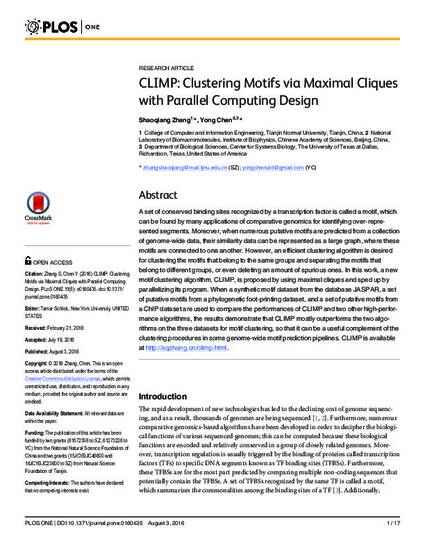
A set of conserved binding sites recognized by a transcription factor is called a motif, which can be found by many applications of comparative genomics for identifying over-represented segments. Moreover, when numerous putative motifs are predicted from a collection of genome-wide data, their similarity data can be represented as a large graph, where these motifs are connected to one another. However, an efficient clustering algorithm is desired for clustering the motifs that belong to the same groups and separating the motifs that belong to different groups, or even deleting an amount of spurious ones. In this work, a new motif clustering algorithm, CLIMP, is proposed by using maximal cliques and sped up by parallelizing its program. When a synthetic motif dataset from the database JASPAR, a set of putative motifs from a phylogenetic foot-printing dataset, and a set of putative motifs from a ChIP dataset are used to compare the performances of CLIMP and two other high-performance algorithms, the results demonstrate that CLIMP mostly outperforms the two algorithms on the three datasets for motif clustering, so that it can be a useful complement of the clustering procedures in some genome-wide motif prediction pipelines. CLIMP is available at http://sqzhang.cn/climp.html.
Shaoqiang Zhang, Yong Chen. (2016). CLIMP: Clustering Motifs via Maximal Cliques with Parallel Computing Design. PLOS ONE 11(8): E0160435.

PLoS One is an Open Access Journal.